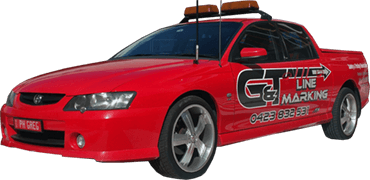Latest articles
Common obstacles with car park line marking
6:00am, Tuesday 15 August 2017
Car park line marking might seem like an easy job, but there are many problems that can occur, both before and during the line painting process. These obstacles can easily trip up inexperienced linemarking companies, resulting in time blow-outs and a poor result, often requiring remedial work at a later date.
So if you are considering engaging a linemarking company for your business, here are a list of the most common problems we come across, when we are engaged in line marking hard surfaces.
- The area that requires line painting has not been cleared of traffic, parked vehicles and pedestrians. As you can appreciate, linemarking with a full car park is not going to be very successful.
- Sand, oil, rubbish, dirt and other debris has not been cleared from the area. Trying to line a car park when the surface has not been cleared of debris results in a poor outcome, so it is essential to take the time to clear the area prior to linemarking.
- Not allowing new concrete enough time to cure before painting the lines can result in the paint bleeding and the concrete being damaged.
- Line painting a wet surface, particularly a porous surface is a recipe for disaster. All surfaces must be dry for at least 2 days prior to painting, particularly when car park line marking is undertaken (i.e. turn off lawn sprinklers and avoid pressure washing).
- You cannot use a solvent road marking paint on new bitumen as it reacts with the bitumen, you must use a waterborne road marking paint.
- Line painting on new bitumen cannot be performed for at least 1 day to give it time to dry and harden.
- For heavy traffic areas, consider preform thermoplastic markings instead of line painting, as they will last 5 times longer in most circumstances.
- Don’t forget that linemarking greater than 200mm in width, requires the addition of an anti-slip grit and reflective glass bead additives to prevent pedestrians slipping and injuring themselves. This is essential when marking disabled parking spots and school zones.


